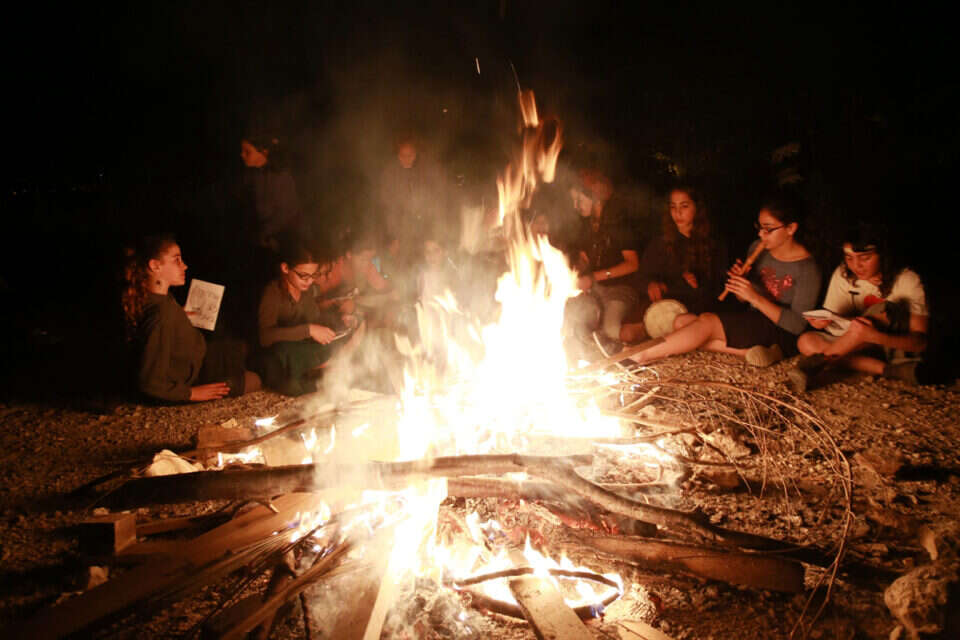1Before Rabbi Shimon bar Yochai was his great rabbi, Akiva ben Yosef. At a certain moment in history, the Oral Torah passed through it, the revealed part of it and the secret Torah. Of the four wise men who entered the orchard of secret (the uni-mysticism), Rabbi Akiva was the only one who entered safely and left safely.
Rabbi Akiva is directly related to Lag B'Omer, because he was the chief ideologue of the Bar Kokhba revolt that broke out in 132. He saw Shimon ben Kusba as the "Messiah," and marked the law for generations, that the Messiah was not a mystic or a miracle-maker, but a political leader anointed with oil to lead the people to independence and the excellent liberation of Rome.
2The customs of mourning in the counting of the Omer are not mentioned in the Talmud or in the period of the Gaonim. They entered Jewish tradition about a thousand years ago in response to the terrible destruction of the communities in 1096 during the First Crusade, since most of the disturbances occurred during the days of the Omer. To this was added the comment in the Talmud that during this period thousands of Rabbi Akiva's disciples died "because they did not show respect to one another." The Talmud apparently used code language to tell that the students participated in military guerrilla operations. Rabbi Moshe Tzvi Neria explained that in times of war, "honor is not practiced" within the normal social hierarchy; What counts is a military command hierarchy. The revolt was considered a "war of mitzvah," and Rabbi Akiva sent his students to fight for our independence, in which heroic deaths fell.
3The fire of the bonfires on Lag B'Omer is the fire of rebellion ignited by Rabbi Akiva, Bar Kochba and his army to the revolts of Israel in his land. The revolt was successful at the beginning, so that an entire Roman legion was erased from the records and Bar Kokhba declared independence in part of the country. The Romans sent more legions and auxiliary troops, and in 135 were able to cruelly suppress the revolt. The destruction of the land this time was greater than the destruction in 70. Rabbi Akiva himself was captured and executed, and with him a broad avenue of leadership. Emperor Hadrian's anger was so great that he ordered the name "Judah" deleted from the records and replaced with "Syria-Palestine." He thought that within a generation or two the Jews would forget their country and cease to aspire to independence.
4This is the background to Rashbi's escape to the cave. Zion buckled a sack, sovereignty was lost, and the national idea went into a coma. It is time for gathering and restoring the spirit. When the national body disintegrates, the spirit is left exposed to individuals of virtue who deal with the secret layers of the ancient texts, in an attempt to find a deep compromise to the harsh reality, to life in personal and national exile. Now flowers have emerged from the ruins of bold, inner thinking that, being the domain of a few, corresponded with philosophy, theology and even mythology in a different course from dealing with the overt texts.
While outside the buildings of the Jewish kingdom collapsed, inside the buildings of the divine kingdom were established, into which the Jewish people entered a period of coma. He functioned as a "living dead": a hybrid unknown in history; A people without a land, scattered in thousands of communities around the world, whose lives were organized from birth to death through Jewish law and halacha, and whose ceremonies preserved the hope of one day returning home to Zion. In the depths of reality, the individuals of virtue dealt with dreams of personal and national redemption. Thus, they hoped, the spirit would be redeemed and resurrected.
5It is impossible to describe the new era in our history, including the Enlightenment, Zionism, and the establishment of the State of Israel, without the constant preoccupation with the inner spirit, the deep layers of Hebrew, the mythology of halacha, the dreams of the kingdom, the wandering of the mystics, the wanderers of the spirit who made their way in worlds that seemed both formless and idolatrous. To this must be added the attitude towards "Christianity" – sometimes with appreciation and sometimes with fear of the irrational. Even the rebellion against religion—including the secularization revolution—used bold thinking tools developed in that hidden part of religious thought.
On Lag B'Omer we also ignite this inner fire, and together they warm our hopes: the fire of independence and political sovereignty, and the fire of building the visible and inner spirit.
Wrong? We'll fix it! If you find a mistake in the article, please share with us

